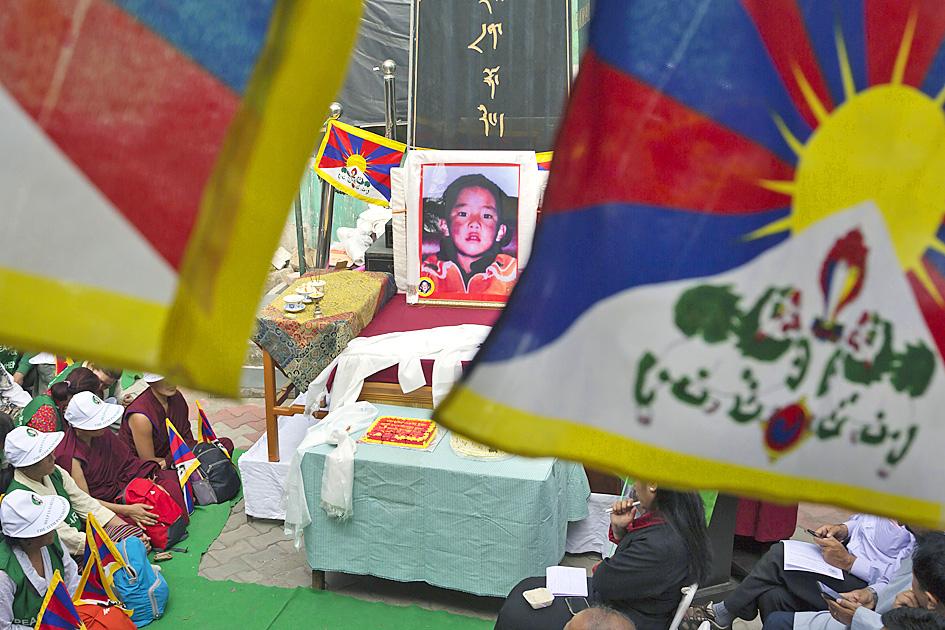Tibet’s self-declared government-in-exile in India yesterday marked the 25th anniversary of the disappearance of a boy named as Tibetan Buddhism’s second-highest figure by calling on China to account for his whereabouts.
The Tibetan parliament in Dharamsala, India, known as the Kashag, said Gedhun Choekyi Nyima, who was named as the 11th Panchen Lama and who was taken away at age six along with his family in 1995, continued to be recognized as the sole legitimate holder of his title.
Beijing, which claims Tibet as its own territory, named another boy, Gyaltsen Norbu, to the position and he is believed to live under close government control in China and is rarely seen in public.
“China’s abduction of the Panchen Lama and forcible denial of his religious identity and right to practice in his monastery is not only a violation of religious freedom, but also a gross violation of human rights,” the Kashag statement said.
“If China’s claim that Tibetans in Tibet enjoy religious freedom is to be considered true, then China must provide verifiable information on the well-being and whereabouts of the 11th Panchen Lama” along with others, the statement said.
The dispute mainly focuses on political power and the arcane rituals for naming a new Panchen Lama, believed to be the reincarnation of his predecessor.
The Dalai Lama named Gedhun Choekyi Nyima as the 11th Panchen Lama with the help of Tibetan lamas trained in reading portents and signs.
China claims the reincarnate can only be chosen by pulling lots from a golden urn, a method it used to pick its own candidate under strict control of the Chinese Communist Party (CCP).
Traditionally, the Panchen Lama has served as teacher and aide to the Dalai Lama, Tibetan Buddhism’s highest leader.
Despite appeals from the UN and foreign governments and organizations, China has never provided any solid information on the condition or location of Gedhun Choekyi Nyima and his family, saying only that they did not wish to have contact with the outside world.
The 10th Panchen Lama, a controversial figure who had initially supported the CCP’s rule over Tibet before turning critical and being imprisoned by Beijing, renounced his vows as a monk in 1978. He was politically rehabilitated in 1982 after marrying the daughter of a top Chinese general.
He died in suspicious circumstances during a visit to Shigatse, the traditional seat of the Panchen Lamas, at the age of 50 in January 1989 after making speeches calling for greater religious and social freedoms for Tibetans.
Source: Taipei Times - 2020/05/18





















